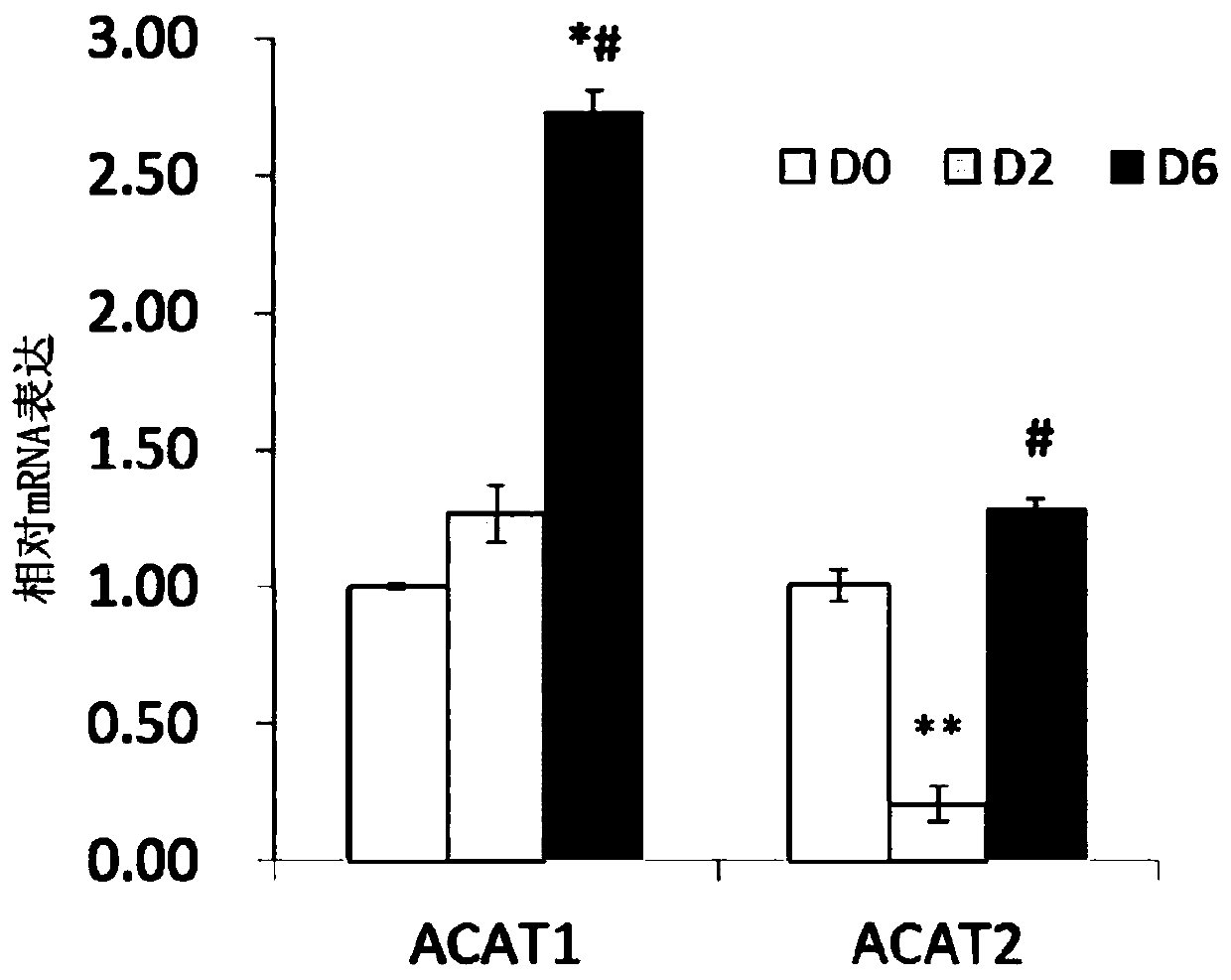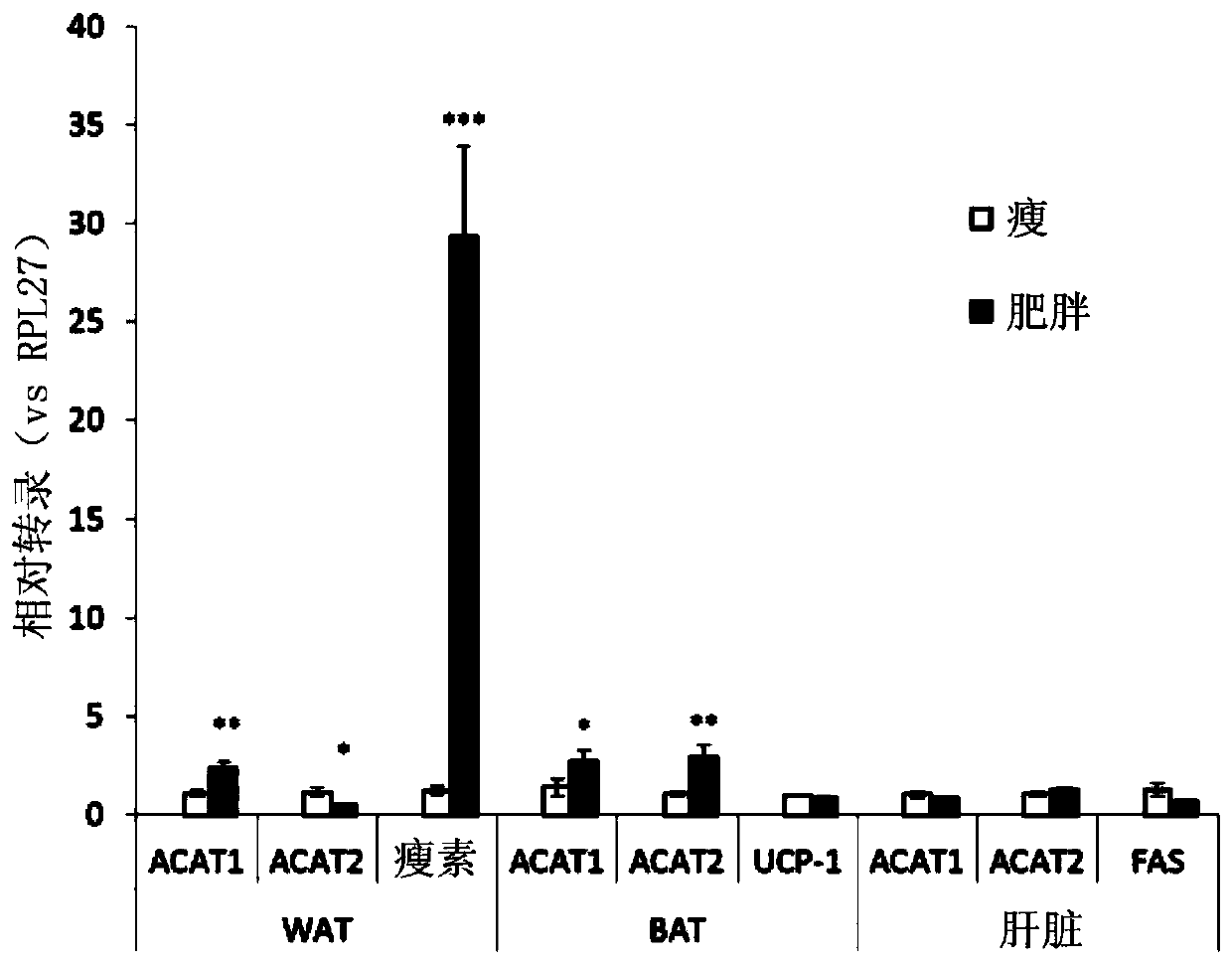Compositions and methods for regulating body weight and metabolic syndromes
A composition and weight-based technology, applied in the direction of biochemical equipment and methods, metabolic diseases, drug combinations, etc., can solve problems such as insulin sensitivity that does not show weight loss
- Summary
- Abstract
- Description
- Claims
- Application Information
AI Technical Summary
Problems solved by technology
Method used
Image
Examples
example 1
[0173] Example 1: ACAT1 expression is positively associated with adipogenesis and obesity
[0174] To examine the function of ACAT in obesity, the expression patterns of ACAT1 and ACAT2 genes and their gene products during in vitro adipogenesis in mouse 3T3-L1 preadipocytes were examined. It was judged by real-time PCR that the level of ACAT1 mRNA in adipocytes was significantly increased 2 days after the initiation of adipogenesis (ie D2) ( figure 1 ). However, ACAT2 mRNA levels were similar between preadipocytes (D0) and mature adipocytes (D6), while a temporary decrease in ACAT2 levels was observed at D2 ( figure 1 ). Furthermore, white adipose tissue (WAT) isolated from high-fat diet-induced obese mice showed elevated mRNA levels of ACAT1 and decreased mRNA levels of ACAT2 when compared to levels in lean mice as judged by real-time PCR assays . Leptin levels were measured in WAT from lean and obese mice to confirm the development of obesity ( figure 2 ). Furthermo...
example 2
[0175] Example 2: Inhibition of Lipid Accumulation in Adipocytes by ACAT Inhibitors (Avasimibe and CI-976)
[0176] To determine the effect of ACAT inhibitors on lipid accumulation in adipocytes, mouse 3T3-L1 preadipocytes were differentiated into mature fat cells. Avasimibe solutions were prepared by dissolving in dimethylsulfoxide (DMSO). On day 6, preadipocytes and avasimibe-treated differentiated adipocytes were stained with Oil Red O to visualize accumulated intracellular lipids. Then, Oil Red O-stained lipids were extracted for spectroscopic quantification of lipids. Intracellular lipids were reduced by up to 60% in a dose-dependent manner ( Figure 3A and Figure 3B ). Avasimibe's inhibition of lipid accumulation ( Figure 4 ). Similar to avasimibe, treatment of differentiated adipocytes with the non-selective ACAT inhibitor CI-976 at a concentration range of 0 μM, 5 μM, 15 μM, and 20 μM for 6 days also resulted in a reduction in lipid accumulation, as measured...
example 3
[0178] Example 3: Avasimibe reduces adipocytes by modulating SREBP1 expression and function on lipid synthesis lipid accumulation
[0179] Because SREBP1 plays a key role in de novo fatty acid and TG synthesis, and Image 6 The data in showed a potential inhibitory effect of avasimibe on the repression of SREBP1 downstream genes involved in fatty acid and TG synthesis, so the ability of avasimibe treatment to alter SREBP1 protein expression and de novo fatty acid synthesis in adipocytes was examined. Avasimibe treatment resulted in increased levels of the 125 kDa inactive precursor form of SREBP1 in adipocytes, as judged by Western blot analysis using β-actin (protein loading control) and an SREBP1-specific antibody ( Figure 7 ).
[0180] Using deuterium-labeled glucose-d7, the effect of avasimibe on de novo fatty acid synthesis in adipocytes treated with or without avasimibe was examined. Glucose-d7-incorporated fatty acids were visualized by stimulated Raman scatterin...
PUM
 Login to View More
Login to View More Abstract
Description
Claims
Application Information
 Login to View More
Login to View More - R&D
- Intellectual Property
- Life Sciences
- Materials
- Tech Scout
- Unparalleled Data Quality
- Higher Quality Content
- 60% Fewer Hallucinations
Browse by: Latest US Patents, China's latest patents, Technical Efficacy Thesaurus, Application Domain, Technology Topic, Popular Technical Reports.
© 2025 PatSnap. All rights reserved.Legal|Privacy policy|Modern Slavery Act Transparency Statement|Sitemap|About US| Contact US: help@patsnap.com



